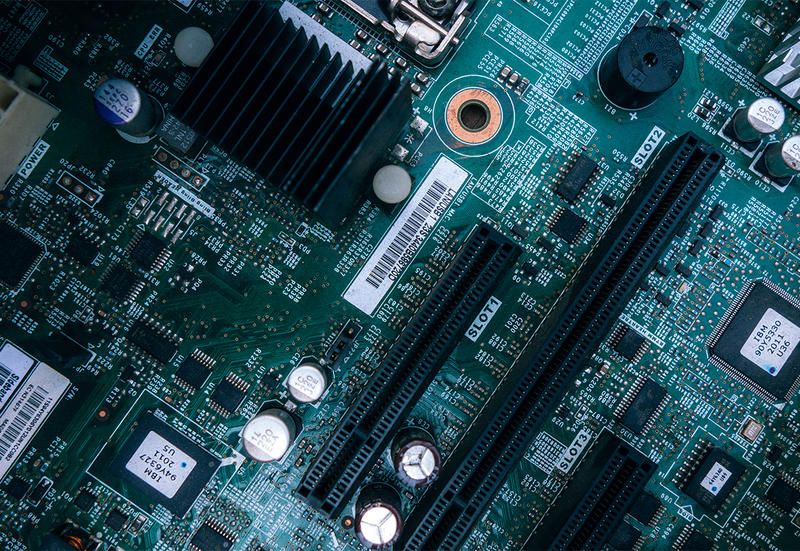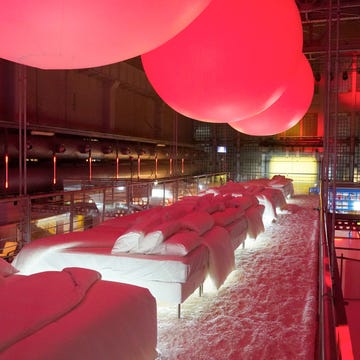There’s no denying that we live in an extraordinary time, where technological and scientific innovation are capable of changing the world from one day to the next. The prestigious MIT knows this all too well and has put together a list of the 10 technological breakthroughs that will change the world in 2018. Since 2001, the Cambridge institute’s magazine, MIT Technology Review, has guided us through some of the most fascinating inventions on the horizon.
Some seem better adapted to an upcoming sci-fi blockbuster, like artificial intelligence capable of “imagining”, or the headphones that translate in real time. Others point to important issues in bioethics, like artificial embryos or genome reading. And then there are the more technical discoveries that are sure to have major impacts on the environment as well as in the world of medicine and energy.
Before you get too worked up, the following inventions won’t be found on the commercial market or utilized by the masses anytime soon; instead, these are the 10 technological breakthroughs that will have the biggest impact on our future according to the MIT. Buckle up.
- A 3-D printer for metallic objects
An invention that could surely change the future landscapes and mass-produced goods. Until now, 3-D printers have only been able to create objects in plastic for the hobbyists and designers. All of that could change with the invention of a 3-D metal printer; just imagine the enormous impact it would have on the industrial world. At the moment, research is led by two Boston area startups, Markforged and Desktop Metal, in addition to the colossal General Electric, who has created only a beta version for larger pieces.
2. Artificial Embryos
Researchers at the University of Cambridge have created similar structures to embryos using just stem cells, without the use of eggs or sperm cells. This would completely open the door to creating new life. Today, only mice embryos have been reproduced, although humans are next on the list. The University of Michigan and Rockefeller University are behind the studies and we expect plenty of debate to come in the field of bioethics.
3. Sensing Cities
Among the many projects for smart cities announced throughout the world, MIT has chosen Sidewalk Toronto as a prime example. The coastal development plan along Lake Ontario would transform more than 800 underused hectares into a smart and hi-tech area. The example in Toronto was chosen because, unlike many others, the project is feasible and isn’t too expensive or ambitious.
4. Artificial intelligence in the cloud
At this moment, the use of AI is dominated by a relatively small number of business and giants but used as a service within the cloud, it could become accessible to many more. The push for the economy would be incredible and it’s companies like Amazon, Google, and Microsoft are already at work to make it happen. Beyond the tech industry, other fields like medicine, manufacturing, and energy are sure to benefit.
5. The “Dueling Neural Networks”
It’s been discovered that when two neural networks “duel”, they’re able to learn incredibly quickly and can create ultra-realistic images and sounds. In other words, they can develop something similar to an imagination. The practical use? Take the example of a self-driving car. As of now, AI can identify pedestrians, but it isn’t terribly good at producing images of them. If the computer were able to automatically produce thousands of imaginary pedestrians, it could teach a car to drive and avoid them. MIT adds that it “may help them become less reliant on humans—but also turns them into alarmingly powerful tools for digital fakery.” Research is currently underway at Google Brain, DeepMind, and Nvidia.
6. Babel-Fish headphones
In an increasingly global world, language is a constant communication barrier. That’s where Babel-Fish comes in with their latest headphones that are capable of listening and translating in real time. The MIT Technology Review explains how they’re used: “One person wears the earbuds, while the other holds a phone. The earbud wearer speaks in his or her language—English is the default—and the app translates the talking and plays it aloud on the phone. The person holding the phone responds; this response is translated and played through the earbuds.”
7. Zero-carbon natural gas
A pilot power plant near Houston is currently testing an efficient and economical solution to capture the carbon released while burning natural gas, thus avoiding the emission of greenhouse gases. The positive results of this are clear, as 32% of the electricity in the United States is produced with natural gas, representing nearly 30% of the carbon emissions in the energy sector. If this project by Netpower works, within 3 or 5 years we’ll have a way to produce carbon-free energy from fossil fuels at a reasonable price.
8. Perfect Online Privacy
Every time we enter information into a website, for example, to prove we’re over 18 or to make an online purchase, we provide personal information. Soon it won’t have to be like this with the help of a new cryptographic protocol known as a zero-knowledge proof. The solution has been in the works for years, but it’s only come to the surface recently thanks to the popularity of cryptocurrency. The company responsible for the zk-SNARK (for “zero-knowledge succinct non-interactive argument of knowledge”) is Zcash, and we might be able to navigate without risking our privacy one day.
9. Genetic fortune telling
Scientists are already able to see our likelihood of heart disease or breast cancer, or even our IQ, just by reading our DNA. The experiments have included more than one million people, and the results were surprising to say the least. Research is being carried out by Helix, 23andMe, Myriad Genetics, UK Biobank, and Broad Institute.
10. Materials’ Quantum Leap
IBM has simulated the electronic structure of a small molecule with three atoms, using a quantum computer with seven qubits. In more simple terms, if we think today’s computers are advanced, we’re sadly mistaken. The quantum computer is able to model electrons and molecules, a process which entails extraordinarily difficult calculations not possible on today’s computers. Relying on the new qubits rather than bits, we could create new proteins for pharmaceutical drugs, make new electrolytes for batteries, or even create liquid energy from the sun. It’s all the beginning of an exciting new breakthrough we’ll see develop in the next 5-10 years.













